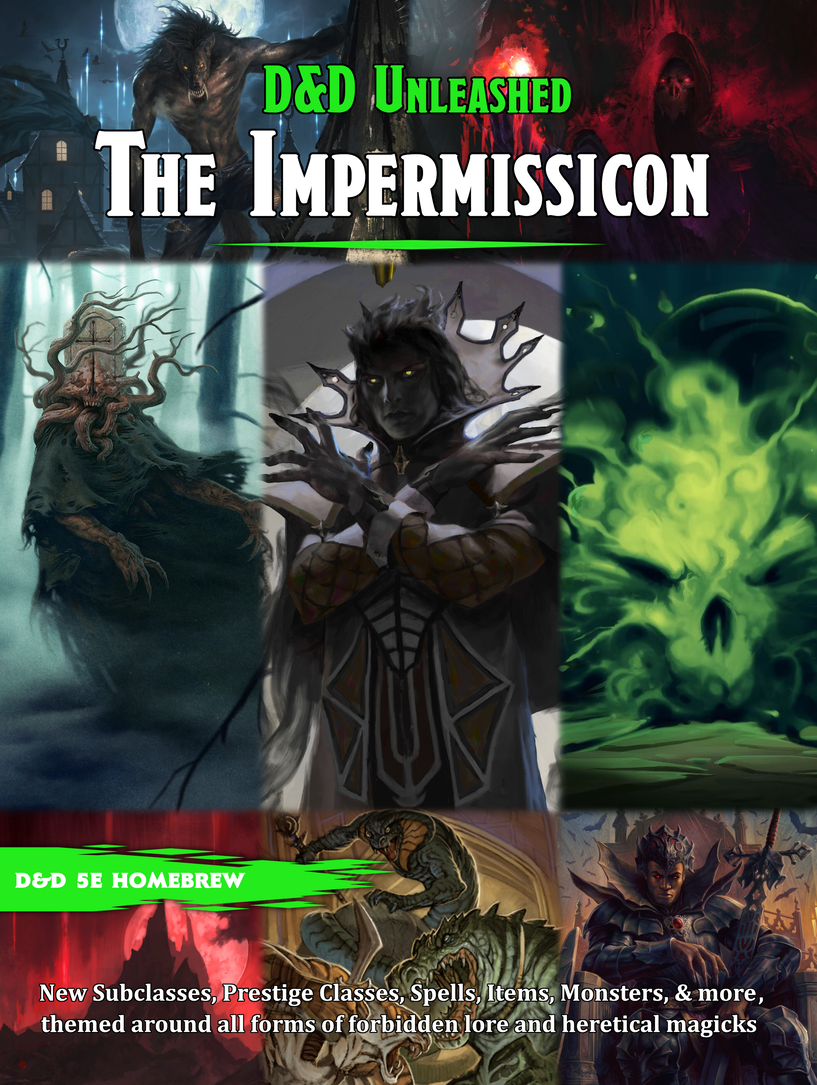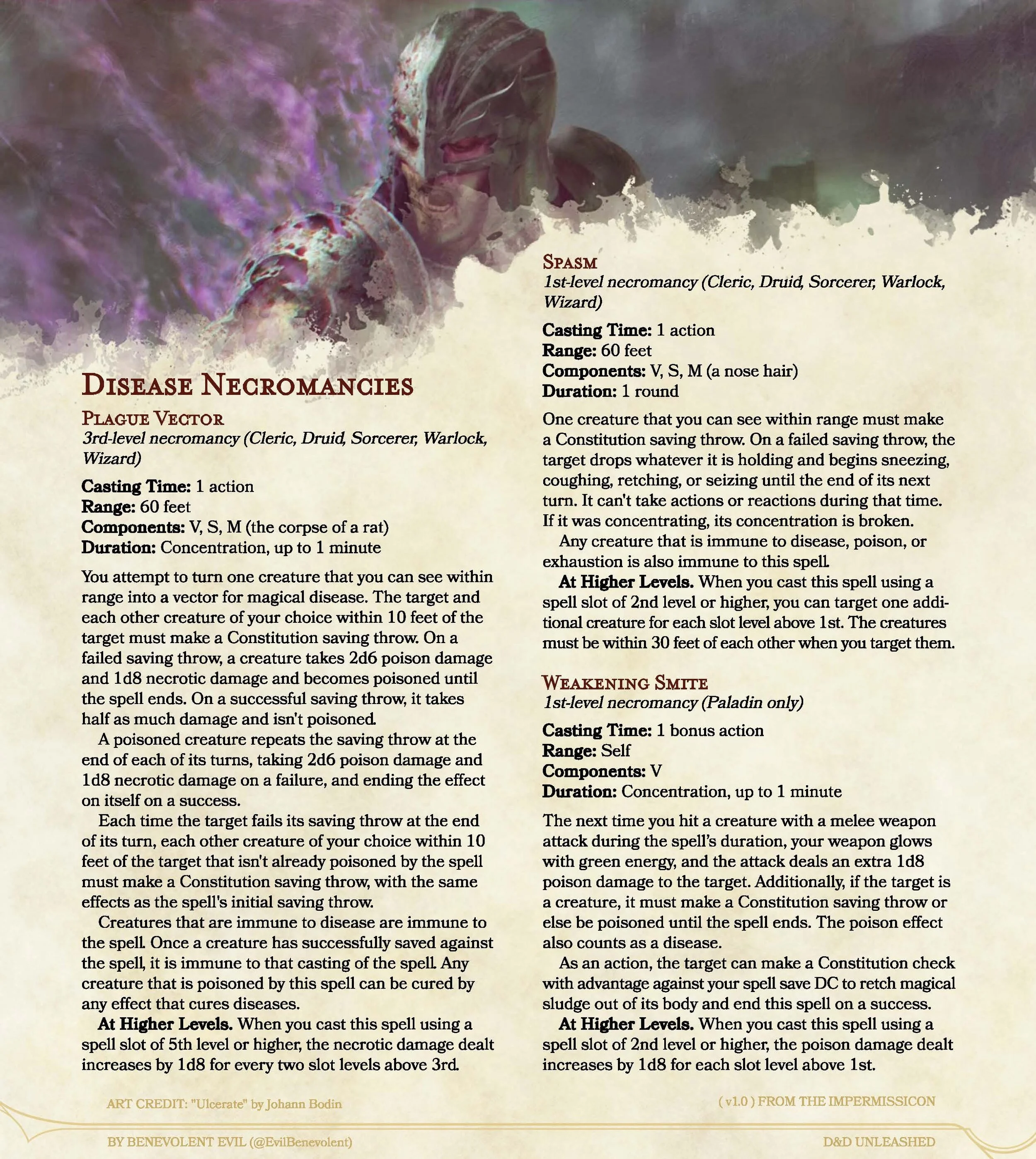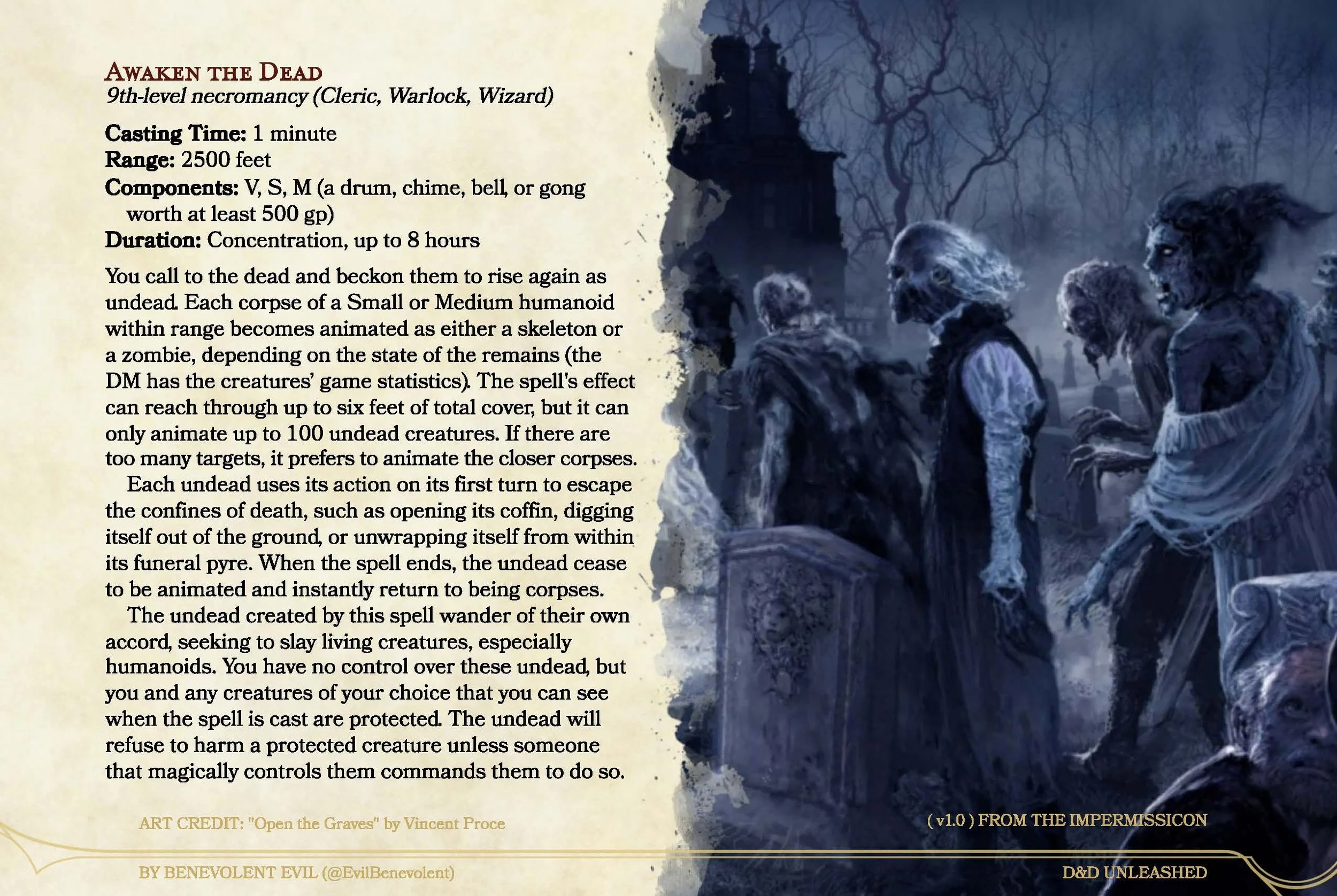New Spells: Ghostly Necromancies
The most updated version of this content can be found within The Impermissicon, a free 254-page compendium that you can download right here, filled with 24 subclasses, 3 prestige classes, 2 feats, 107 spells, 118 spell variants, 91 monsters, 61 magic items, 24 poisons, 23 diseases, and even more goodies themed around lycanthropes, vampires, and forbidden magic for both players and DMs!
PDF Link | D&D Beyond: Spectral Calling, Haunting Hour
Art Credit: https://www.artstation.com/artwork/3Nkg
Proper necromancy is about more than just ghouls, zombies, and skeletons — well-rounded necromancers control ghosts, wraiths, and specters as well! While necromancers have recently gained new options using the summon undead spell, those looking to summon a specific ghost or control multiple apparitions at once won’t be satisfied by existing spells. To slake the thirst of ghostly necromancers, D&D Unleashed is previewing two of the soul magic necromancies coming in the next compendium, The Impermissicon.
Haunting hour, the simpler of the two spells, is best compared to the existing 4th-level spell conjure woodland beings (which can be cast with an 8th-level slot to summon 6 fey of CR 1). Unlike that spell, haunting hour only summons one type of creature: the regular CR 1 specter. Specters can be dangerous, especially given their utility of flying and phasing through objects, and so summoning six of them at once can potentially deal a great deal of damage to the target of the specters’ wrath. At the same time, since haunting hour can’t be used like conjure woodland beings or conjure animals to summon fewer beasts with more hit points, the many specters will always be vulnerable to area damage. Despite that, their resistances to damage like cold, fire, and lightning help them to survive many of the more common area abilities and spells. All told, haunting hour can be a bit underwhelming for an 8th-level spell when cast in most locations, but its most interesting feature is that it becomes more powerful when cast in an area of evil, where wicked spirits like specters are more likely to gather, allowing the caster to summon eight specters. If they’re a necromancer wizard, those specters each receive a huge bonus to hit points and damage dealt, allowing the spell to reach its most powerful state. Facing an evil necromancer inside their own nefarious lair has never been more dangerous!
Spectral calling is a more complex spell that has many similarities with the infernal calling spell from Xanathar’s Guide to Everything. Unlike that spell, this one summons a monster of lower challenge rating, and it offers less powerful control when the target is summoned using its true name and component. While that might make spectral calling seem like less powerful than infernal calling, summoning ghosts and other apparitions has its upsides when compared to summoning devils. Ghosts may know more about the Material Plane that adventurers often find themselves in, and they can be easier to convince via persuasion or trickery since they often have more worldly desires. And a specific ghost may have knowledge from beyond the grave that the spellcaster could use. A necromancer who creates a ghost using the new create apparition spell (to be found alongside these spells in The Impermissicon) will have a much easier time summoning and controlling that ghost in the future using spectral calling! As for what spectral calling can summon, the following creatures from the Monster Manual can be chosen by the spellcaster:
Specter (CR 1)
Poltergeist (CR 2) (Variant of specter)
Will-o’-Wisp (CR 2)
Banshee (CR 4)
Ghost (CR 4)
Shadow Demon (CR 4)
Wraith (CR 5)
From the other official books, we have these more exotic apparitions that a spellcaster could summon, if the DM allows these options in their game:
Indentured Spirit (CR 1) (From Guildmaster’s Guide to Ravnica)
Flitterstep Eidolon (CR 3) (From Mythic Odysseys of Theros)
Phantom Warrior (CR 3) (From Curse of Strahd)
Dybbuk (CR 4) (From Mordenkainen’s Tome of Foes)
Allip (CR 5) (From Mordenkainen’s Tome of Foes)
Ghostblade Eidolon (CR 5) (From Mythic Odysseys of Theros)
Gallows Speaker (CR 6) (From Van Richten’s Guide to Ravenloft)
Obzedat Ghost (CR 8) (From Guildmaster’s Guide to Ravnica)
Cloud Giant Ghost (CR 9) (From Candlekeep Mysteries)
In addition, The Impermissicon itself will also contain at least three new apparitions that can be summoned using spectral calling:
Psychic Remnant (CR 4)
Twisted Soul (CR 4)
Sentient Ectoplasm (CR 6)
And finally, the last compendium, Legends of Prestige and Prowess, will have two more optional apparitions with a less sinister nature:
Ancestral Spirit (CR 4)
Saint Soul (CR 4)
All together, that’s twenty different spectral apparitions that a necromancer can call to their aid. Just be sure you can defeat those Insight checks, or you may end up with more than you bargained for by summoning them! Using these new homebrew spells from D&D Unleashed, you can add all this variety to the narrative gameplay of your necromancers, whether they are player characters or NPCs!
PDF Link | D&D Beyond: Spectral Calling, Haunting Hour








